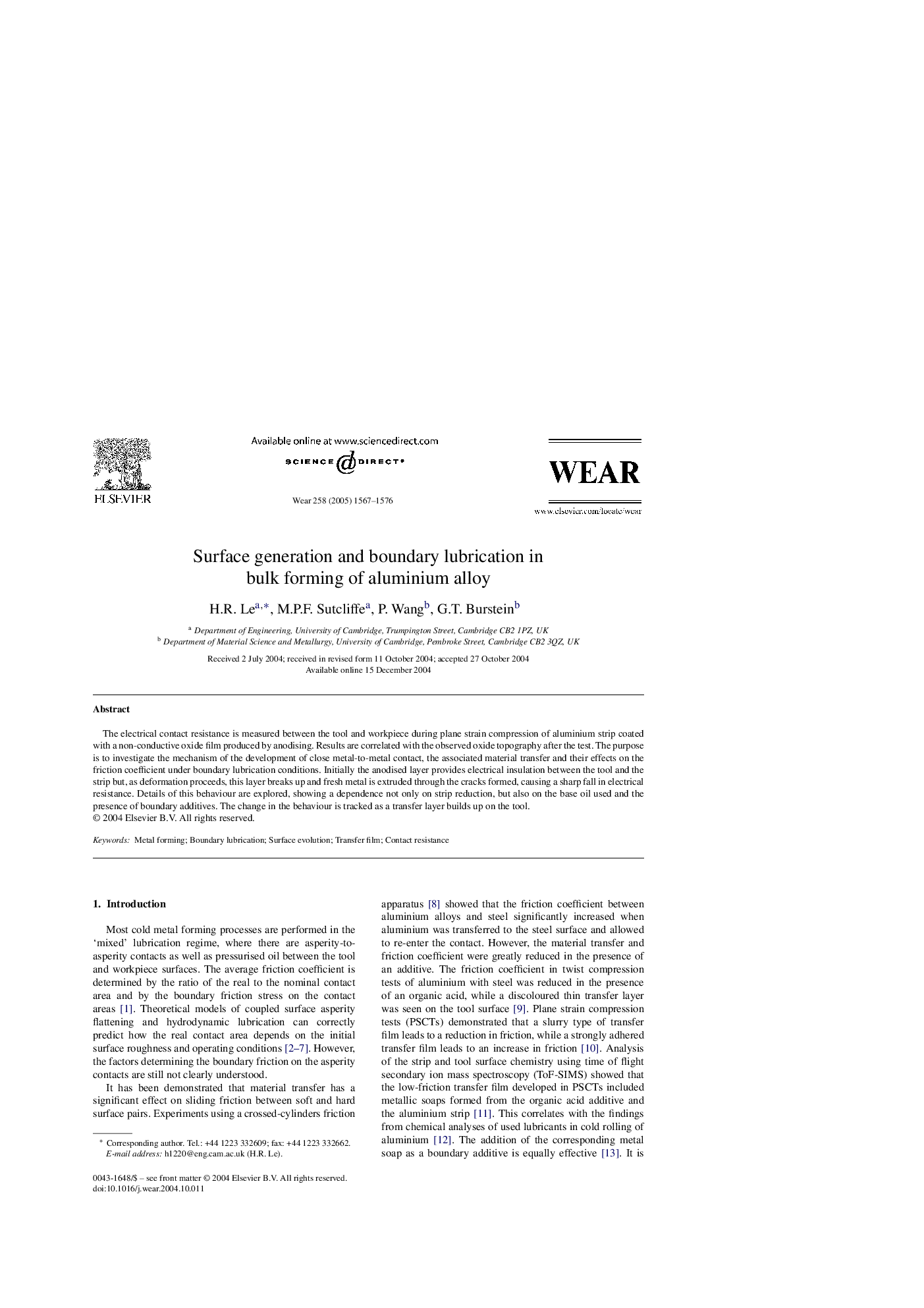| Article ID | Journal | Published Year | Pages | File Type |
|---|---|---|---|---|
| 10384819 | Wear | 2005 | 10 Pages |
Abstract
The electrical contact resistance is measured between the tool and workpiece during plane strain compression of aluminium strip coated with a non-conductive oxide film produced by anodising. Results are correlated with the observed oxide topography after the test. The purpose is to investigate the mechanism of the development of close metal-to-metal contact, the associated material transfer and their effects on the friction coefficient under boundary lubrication conditions. Initially the anodised layer provides electrical insulation between the tool and the strip but, as deformation proceeds, this layer breaks up and fresh metal is extruded through the cracks formed, causing a sharp fall in electrical resistance. Details of this behaviour are explored, showing a dependence not only on strip reduction, but also on the base oil used and the presence of boundary additives. The change in the behaviour is tracked as a transfer layer builds up on the tool.
Related Topics
Physical Sciences and Engineering
Chemical Engineering
Colloid and Surface Chemistry
Authors
H.R. Le, M.P.F. Sutcliffe, P. Wang, G.T. Burstein,
